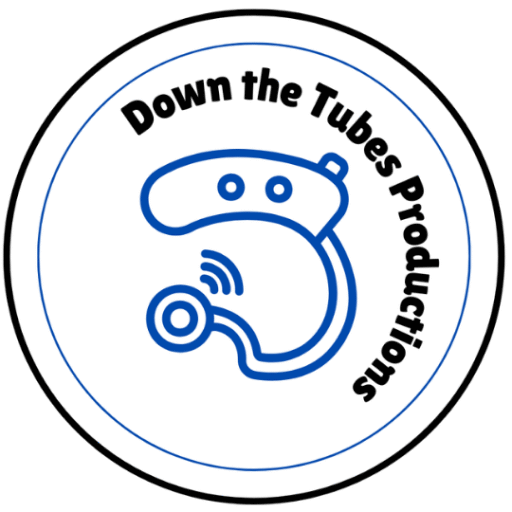This week Julie wrote about things people have said to her, things that need to be said like a fish needs a bicycle (that’s for all you U2 fans out there!). Some of the things are cringe-worthy but all of the things are worth a read https://deafbutnotreally.blog/2024/10/07/things-people-say-2/.
I, however, don’t have any such stories.
I’ve only been open about my hearing loss and how it’s something that informs every single thing I do for a handful of years. People still seem to be a bit hesitant to ask me about my hearing. Either that or when they do ask, I don’t hear them. S,o in the stead of writing about things I hear people say, I’m writing about tubes.
The tubes that connect my bionic ears to my moldings is how sound is ear-mailed to my brain. The tubing fits on the aid’s horn, which it’s the clear part on the top of the bionic ear. It’s airtight because if it were loose, sound would leak and the bionic ear would scream in pain. Feedback also would happen if the tubing didn’t fit snugly in the molding itself. So it’s glued in place by my fearless audiologist. The glue is strong but, as I found out the hard way, it’s not that strong.
I used to have the bad habit of pulling my aids out of my ears by the tubing. The glue would weaken and weaken until one night, I’d give the tubing a tug and my aid would come out but my molding would be left behind. I’d be able to dig out the molding and put the tubing back in. But from that point on as I went about my day I’d have to constantly push the tubing back in. It wouldn’t come out all the way but it would be jostled as I had the nerve to move my head.
I’d deal with this for a couple of days before I went to the audiologist to get new tubing. Chris would lightly chastise me and remind me to use the molding to pull out the aid. If you look at the picture of my aid above, you’ll notice there’s an open space towards the side. I can, and should, grab the edge and pull the aid out that way. This last pair, I’ve been a good boy and have done so reliably. But that doesn’t prevent me from making regular visits to the audiologist.
Because the tubing doesn’t last.
Over time the tubing hardens. The tubing is made of a soft plastic which gently guides the sound from aid to ear. But it also reacts to the weather. The plastic expands when it’s warm and contracts when it’s cold. This elasticity lessens over time, making the tubing harder and harder.The harder the plastic of the tube, the harder the trip of the sound.
This happens so slowly that I don’t realize how much the tubing affected my hearing until after I get it changed. Listening is an active struggle all the time. So I’m more apt to chalk it up to being a hard day than it being hard tubing. I’ve gotten into the habit of periodically squeezing the tubing to see if it’s time for a trip to MEEI. I can usually go 5-6 months between trips. And after the warranty of my hearing aid runs out, usually after a year, I need to pay for the visit. Last time I went it was $50.
I’m not sure if all bionic ears need tubing. Just as being open about my bionic ear use isn’t something I’ve been doing for too long, I’ve not been around other hearing aid users for that long. So I can only speak for myself. If you wear aids and don’t have to deal with tubing, let me know!
Hearing aid tune-ups,
Soft has multiple meanings.
There’s no hard deadline.

Leave a Reply